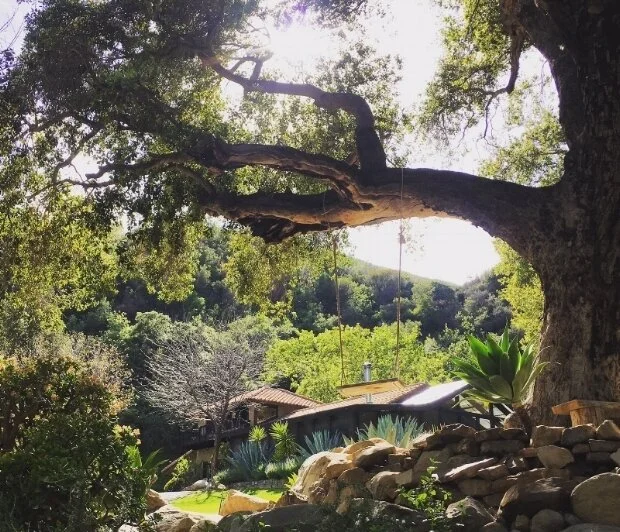Your Pelvic Floor is the "Root" of it All
"What the heck is my "root" and why exactly might I want to retreat to it?" is a pretty common question I've been asked as I've shared about my offerings to my patients, my family, my friends, and random strangers at the coffee shop.
When I named "Retreat to Your Root (RTR): A Yoga for Pelvic Health Retreat" I felt it important that the title spoke to what the experience itself would entail (the retreat) and the multiple levels of healing that could take place (in the root). I chose the word "root" for it's complex and multifaceted nature and it's ability to describe all at once the physical, energetic, and emotional components we would touch on.
THE TANGIBLE ROOT IN OUR BODIES
In our bodies the "root" refers to base of our spine where the perineum and pelvic floor muscles sit. The perineum is the central place in a family of muscles at the base of our pelvises called the pelvic floor, literally the floor or the "root" of our bodies. These muscles sit within our pelvic bones, sacrum, and coccyx which serve as the bony landmarks of our root. This group of muscles is responsible for our bowel/bladder/sexual function, contribute to our core and pelvic joint stability, and functions to keep all of our organs inside our body. It also acts as a lymphatic and venous pump system to maintain good circulation from the lower half of our bodies.
A wide range of issues can arise specifically related to the pelvic floor. The muscles can hold too much or too little tension, they can be too short or over-stretched, they can be restricted by scar tissue, have poor blood supply, compress important nerves, or refer pain to other parts of the body. For the purposes of the retreat and my PT practice I expand the physical definition of the "root" to also include the reproductive organs, lower digestive tract, bladder, deep abdominal and low back muscles and all of the fascia, blood vessels, and nerves that run through this region. The legs and feet are extensions of our roots as they anatomically share nerves that branch out from the sacral region. Given it's key placement in digestion and reproduction, the pelvic floor, our root, is the foundation or root of our physical body-- allowing us to sustain and nurture life Anyone who has experienced physical difficulties related to these physical structures may benefit from RTR and/or seeing a pelvic floor physical therapist.
Common issues or diagnoses associated with "root" dysfunction may include: urinary frequency/urgency/leaking/retention, constipation/ IBS, painful intercourse, difficulty or pain with sexual function, pain with sitting, low back/tailbone/sacroiliac (SIJ)/ hip pain, painful periods, pain during or after childbirth, post-surgical pain, painful bladder syndrome, endometriosis, chronic pelvic pain, chronic urinary or vaginal infections, pelvic organ prolapse, and many others.
THE TANGIBLE ROOT ON EARTH
In a more broad sense of the word, the "root" refers to the earth and nature, Mother Earth- the matter from which we all originate from. Most fundamentally I think of the roots of trees diving through the dirt into the core of the earth. I think of all the tangible earthly elements like minerals, sand, rocks, boulders and mountains. For the purposes of RTR, "root" also refers to the watery elements of nature including our oceans, rivers, and streams.
In her book, Eastern Body, Western Mind, Andoea Judith shares that, "All foundations rest upon the earth- the universal ground for all that we do. To connect with the body is to connect with the earth, to be grounded in the biological reality of existence". An important aspect of RTR is exploring our connection with nature and the earth as a way to invite healing into our own bodies. I think of the physical elements and how those elements are reflected in our own bodies… the tangible structures we can touch. Our legs and feet and sitting bones are what connect us physically to the ground. We can also look at the pelvic floor and other physical structures more abstractly as the dirt, the blood and lymph systems in the pelvis can then be seen as the flowing water components. Time in nature, beautiful natural settings, and nourishing healthy and organic plant-based food are all important components of RTR in an effort to facilitate our connection with the earth and nature.
Most of my retreaters, workshop attendees, and patients show up with 'tangible root' based issues. As a physical therapist I of course believe there's a lot of healing to be had by working on these physical structures. If any of this information rings true for you and you're interested in learning more please consider joining me in the clinic or on the next Retreat to Your Root in Massachusetts on Oct 27-29, 2017.

